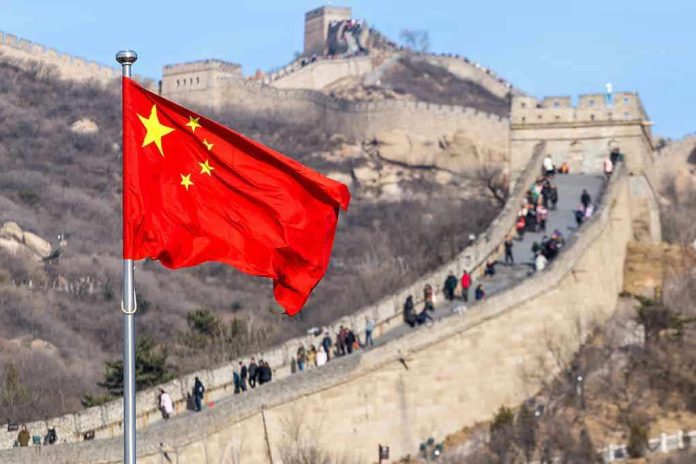
While Trump’s administration has successfully secured America’s borders and launched the largest deportation operation in history, China continues its aggressive military buildup and cyber warfare campaigns that many defense experts warn could signal preparations for future conflict with the United States.
Story Highlights
- Trump’s immigration enforcement has deported over 207,000 migrants by June 2025, restoring border security
- China’s military modernization and cyber operations raise concerns about preemptive strike capabilities
- Defense analysts warn of heightened conflict risks in the Indo-Pacific through 2032
- Trump’s policies eliminate sanctuary protections while experts monitor Chinese strategic positioning
Trump Delivers on Immigration Promise
President Trump has fulfilled his campaign pledge to restore American border security through decisive action. The administration eliminated the disastrous “catch and release” policies of the Biden era, ended birthright citizenship for children of non-permanent residents, and suspended refugee admissions that had flooded communities with unvetted individuals. By June 2025, the Department of Homeland Security reported over 207,000 deportations, demonstrating that America finally has leadership willing to enforce immigration law and protect citizens from the chaos of open borders.
The Trump administration’s immigration enforcement represents a complete reversal of the previous administration’s failed policies. ICE operations now target dangerous criminals through the Laken Riley Act, which mandates detention of immigrants charged with serious crimes. The elimination of “sensitive locations” policies allows law enforcement to arrest criminal aliens in schools and churches, prioritizing American safety over political correctness that had protected lawbreakers at the expense of law-abiding citizens.
Chinese Military Expansion Raises Alarm
While America focuses on securing its borders, intelligence agencies warn that China’s military modernization efforts suggest preparation for potential conflict. The People’s Liberation Army has accelerated naval and missile force development since 2015, constructed artificial islands in the South China Sea, and expanded cyber operations targeting critical American infrastructure. Defense analysts identify 2025-2032 as a particularly dangerous period when Chinese capabilities could enable aggressive action against American interests and allies in the Indo-Pacific region.
China’s Belt and Road Initiative, launched in 2013, extends Beijing’s global influence through infrastructure projects that often serve dual military purposes. The Communist regime under Xi Jinping has demonstrated increasing assertiveness in territorial disputes, particularly regarding Taiwan, while conducting frequent military exercises that simulate conflict scenarios. These developments occur as China seeks regional dominance and challenges American leadership in the world’s most economically vital region.
Strategic Competition Intensifies
The contrast between Trump’s domestic success and China’s international aggression highlights the importance of strong American leadership. While the administration has restored order to immigration policy and eliminated sanctuary protections that endangered communities, China continues expanding its military presence and conducting cyber warfare operations. Regional allies including Japan, South Korea, and Australia face pressure to choose sides as great power competition intensifies in the Indo-Pacific theater.
Defense experts emphasize that while no verified evidence exists of imminent Chinese attack plans, the regime’s actions demonstrate concerning patterns of military preparation and strategic positioning. The situation requires continued American strength and vigilance, qualities that Trump’s administration has demonstrated through decisive immigration enforcement and commitment to protecting American sovereignty against all threats, whether they originate from illegal border crossings or foreign military expansion.
Sources:
US Air University Journal of Indo-Pacific Affairs
National Security Journal – 5 Ways a U.S.-China War Could Break Out in 2025
Council on Foreign Relations – Transition 2025 Series: Future of US-China Relations







